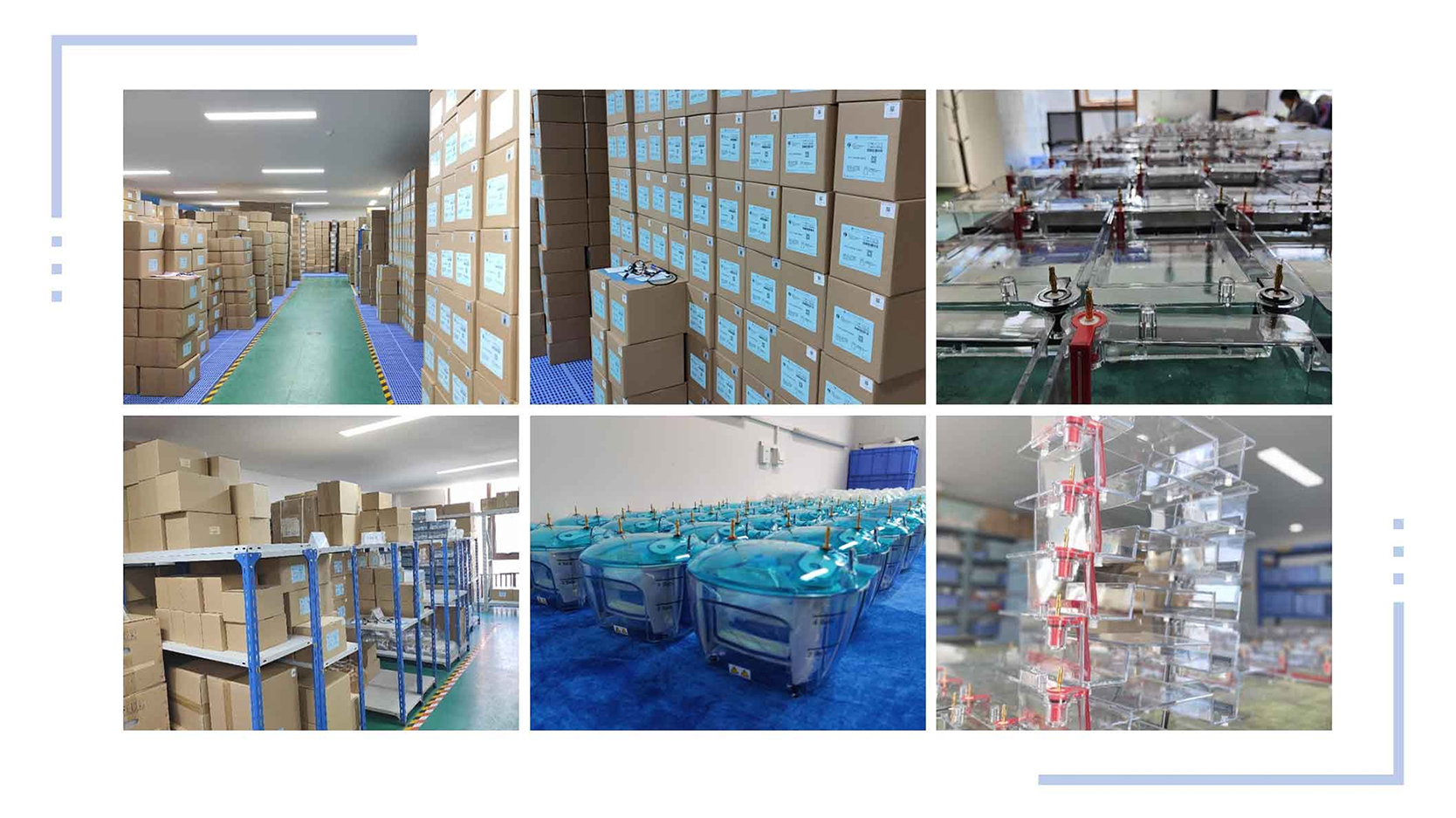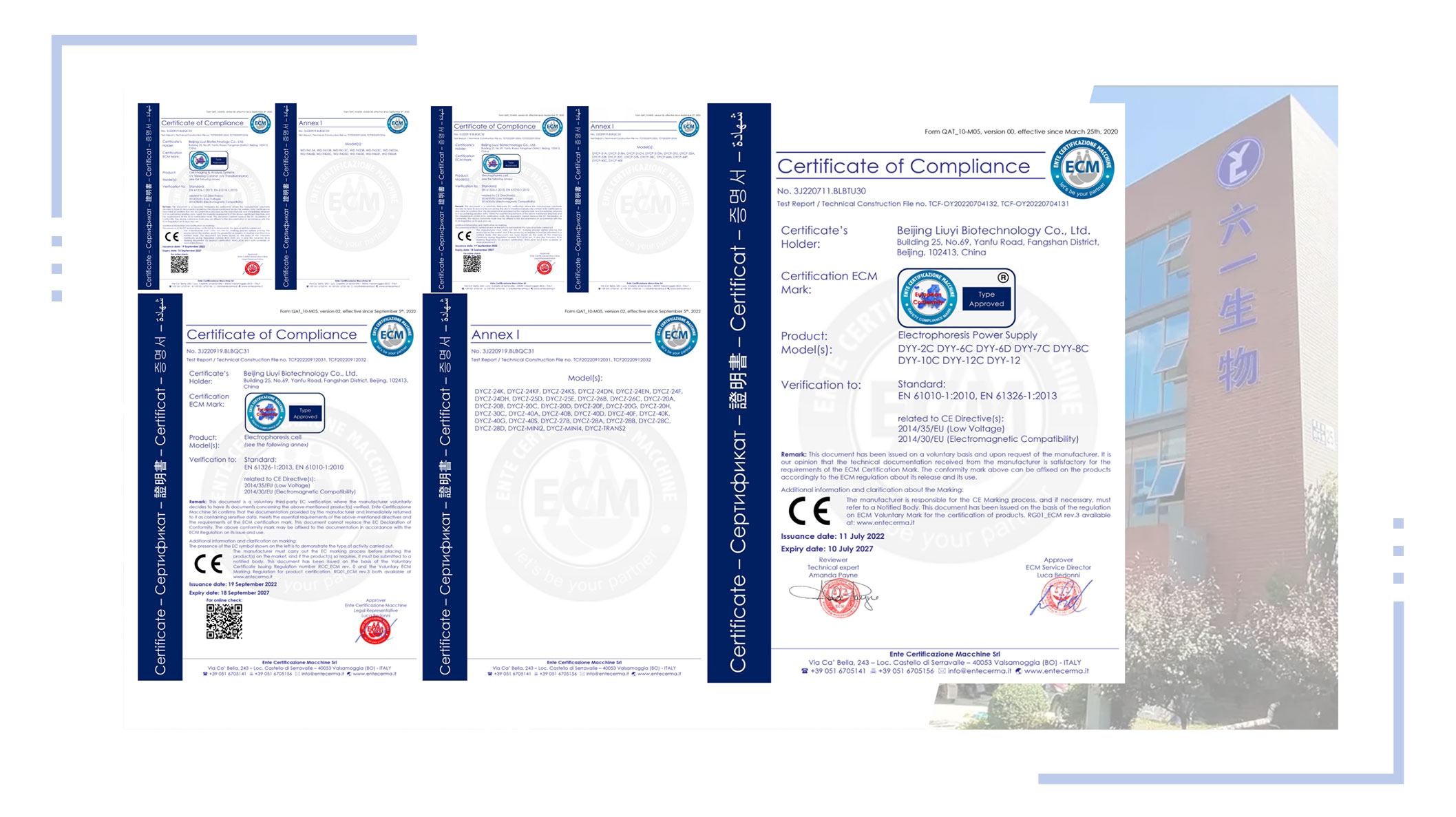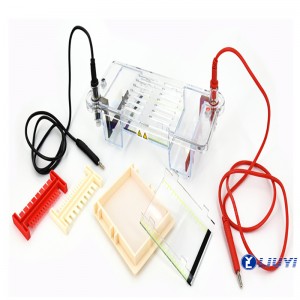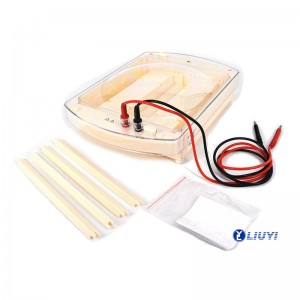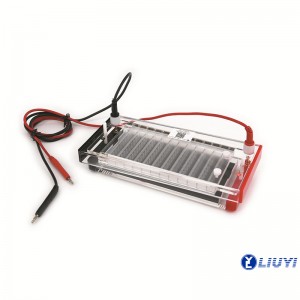Pulsed Field Gel Electrophoresis CHEF Mapper A4
Specifications
|
Model |
CHEF Mapper A4 |
|
Voltage Gradient |
0.5V/cm to 9.6V/cm, incremented by 0.1V/cm |
|
Maximum Current |
0.5A |
|
Maximum Voltage |
350V |
|
Pulse Angle |
0-360° |
|
Time Gradient |
Linear |
|
Switching Time |
50ms to 18h |
|
Maximum Running Time |
999h |
|
Number of Electrodes |
24, independently controlled |
|
Temperature Range |
0℃ to 50℃, detection error <±0.5℃ |
Description
Pulsed field gel electrophoresis (PFGE) separates DNA molecules by alternating the electric field between different spatially oriented electrode pairs, causing DNA molecules, which can be millions of base pairs long to reorient and migrate through agarose gel pores at different speeds. It achieves high resolution within this range and is mainly used in synthetic biology; identification of biological and microbial lineages; research in molecular epidemiology; studies of large plasmid fragments; localization of disease genes; physical mapping of genes, RFLP analysis, and DNA fingerprinting; programmed cell death research; studies on DNA damage and repair; isolation and analysis of genomic DNA; separation of chromosomal DNA; construction, identification, and analysis of large-fragment genomic libraries; and transgenic research.t concentrations as low as 0.5 ng/µL (dsDNA).
Application
Suitable for detecting and separating DNA molecules ranging from 100bp to 10Mb in size, achieving high resolution within this range.
Feature
• Advanced Technology: Combines CHEF and PACE pulsed-field technologies to achieve optimal results with straight, non-bending lanes.
• Independent Control: Features 24 independently controlled platinum electrodes (0.5mm diameter), with each electrode replaceable individually.
• Automatic Calculation Function: Integrates multiple key variables such as voltage gradient, temperature, switching angle, initial time, end time, current switching time, total run time, voltage, and current for automatic calculations, helping users achieve optimal experimental conditions.
• Unique Algorithm: Utilizes a unique pulse control algorithm for better separation effects, easily distinguishing between linear and circular DNA, with enhanced separation of large circular DNA.
• Automation: Automatically records and restarts electrophoresis if the system is interrupted due to a power failure.
• User-Configurable: Allows users to set their own conditions.
• Flexibility: The system can select specific voltage gradients and switching times for particular DNA size ranges.
• Large Screen: Equipped with a 7-inch LCD screen for easy operation, featuring unique software control for simple and convenient use.
• Temperature Detection: Dual temperature probes directly detect buffer temperature with an error margin of less than ±0.5℃.
• Circulation System: Comes with a buffer circulation system that precisely controls and monitors the buffer solution temperature, ensuring constant temperature and ionic balance during electrophoresis.
• High Safety: Includes a transparent acrylic safety cover that automatically cuts off power when lifted, along with overload and no-load protection functions.
• Adjustable Leveling: The electrophoresis tank and gel caster feature adjustable feet for leveling.
• Mold Design: The electrophoresis tank is made with an integrated mold structure without bonding; the electrode rack is equipped with 0.5mm platinum electrodes, ensuring durability and stable experimental results.
FAQ
Q: What is Pulsed Field Gel Electrophoresis ?
A: Pulsed Field Gel Electrophoresis is a technique used for the separation of large DNA molecules based on their size. It involves alternating the direction of the electric field in a gel matrix to enable the separation of DNA fragments that are too large to be resolved by traditional agarose gel electrophoresis.
Q: What are the applications of Pulsed Field Gel Electrophoresis ?
A: Pulsed Field Gel Electrophoresis is widely used in molecular biology and genetics for:
Mapping of large DNA molecules, such as chromosomes and plasmids.
• Determining genome sizes.
• Studying genetic variations and evolutionary relationships.
• Molecular epidemiology, especially for tracking infectious disease outbreaks.
• Analysis of DNA damage and repair.
• Determining the presence of specific genes or DNA sequences.
Q: How does Pulsed Field Gel Electrophoresis work?
A: Pulsed Field Gel Electrophoresis works by subjecting DNA molecules to a pulsed electric field that alternates in direction. This allows large DNA molecules to reorient themselves between pulses, enabling their movement through the gel matrix. Smaller DNA molecules move more quickly through the gel, while larger ones move more slowly, allowing for their separation based on size.
Q: What is the principle behind Pulsed Field Gel Electrophoresis ?
A: Pulsed Field Gel Electrophoresis separates DNA molecules based on their size by controlling the duration and direction of the electric field pulses. The alternating field causes large DNA molecules to continually reorient themselves, leading to their migration through the gel matrix and separation according to size.
Q: What are the advantages of Pulsed Field Gel Electrophoresis ?
A: High resolution for separating large DNA molecules up to several million base pairs.Ability to resolve and distinguish DNA fragments of similar sizes.Versatility in application, from microbial typing to molecular genetics and genomics.Established method for epidemiological studies and genetic mapping.
Q: What equipment is needed for Pulsed Field Gel Electrophoresis ?
A: Pulsed Field Gel Electrophoresis typically requires an electrophoresis apparatus with specialized electrodes for generating pulsed fields. Agarose gel matrix with appropriate concentration and buffer. Power supply capable of generating high-voltage pulses.Cooling system to dissipate heat generated during electrophoresis, and a circulation pump.



